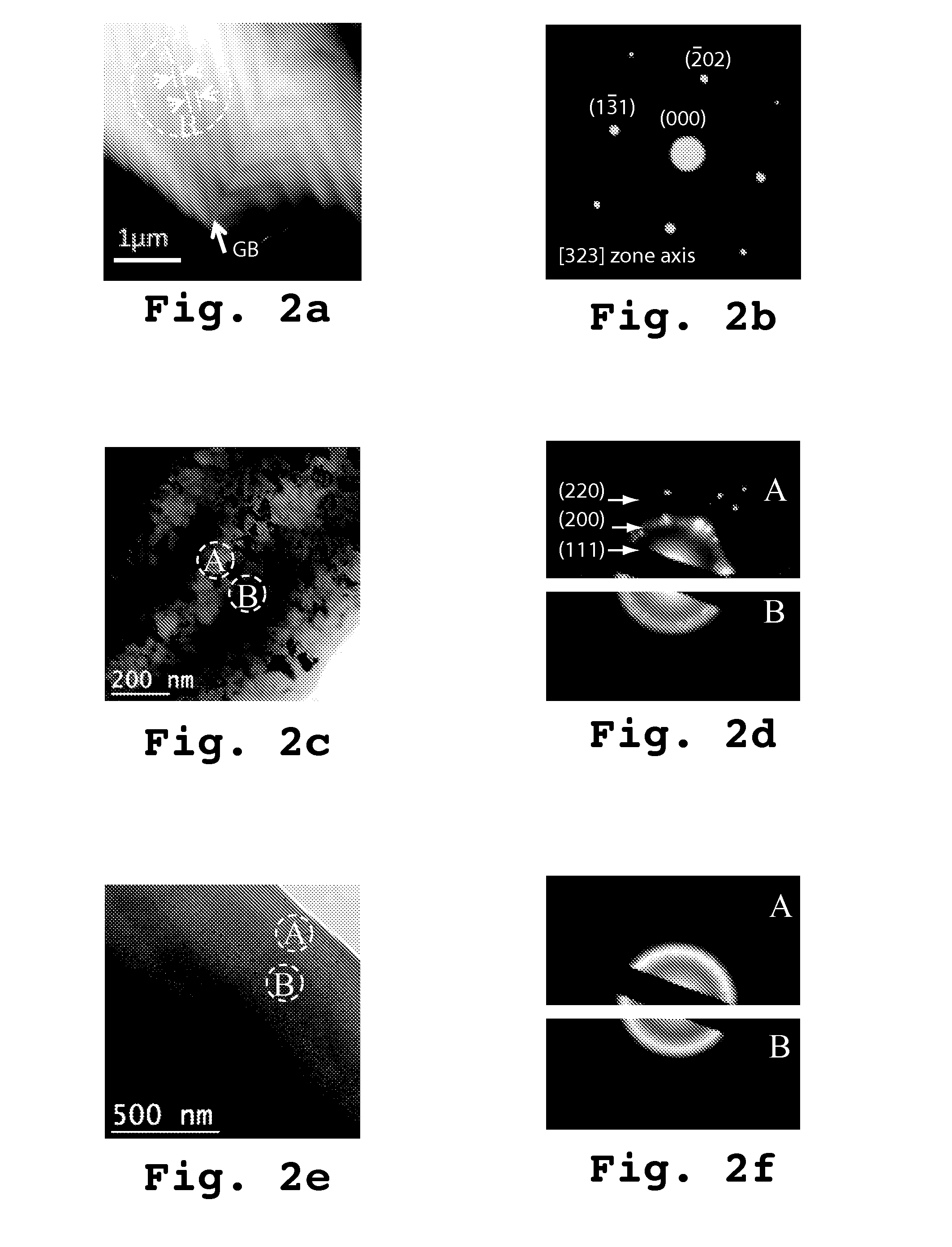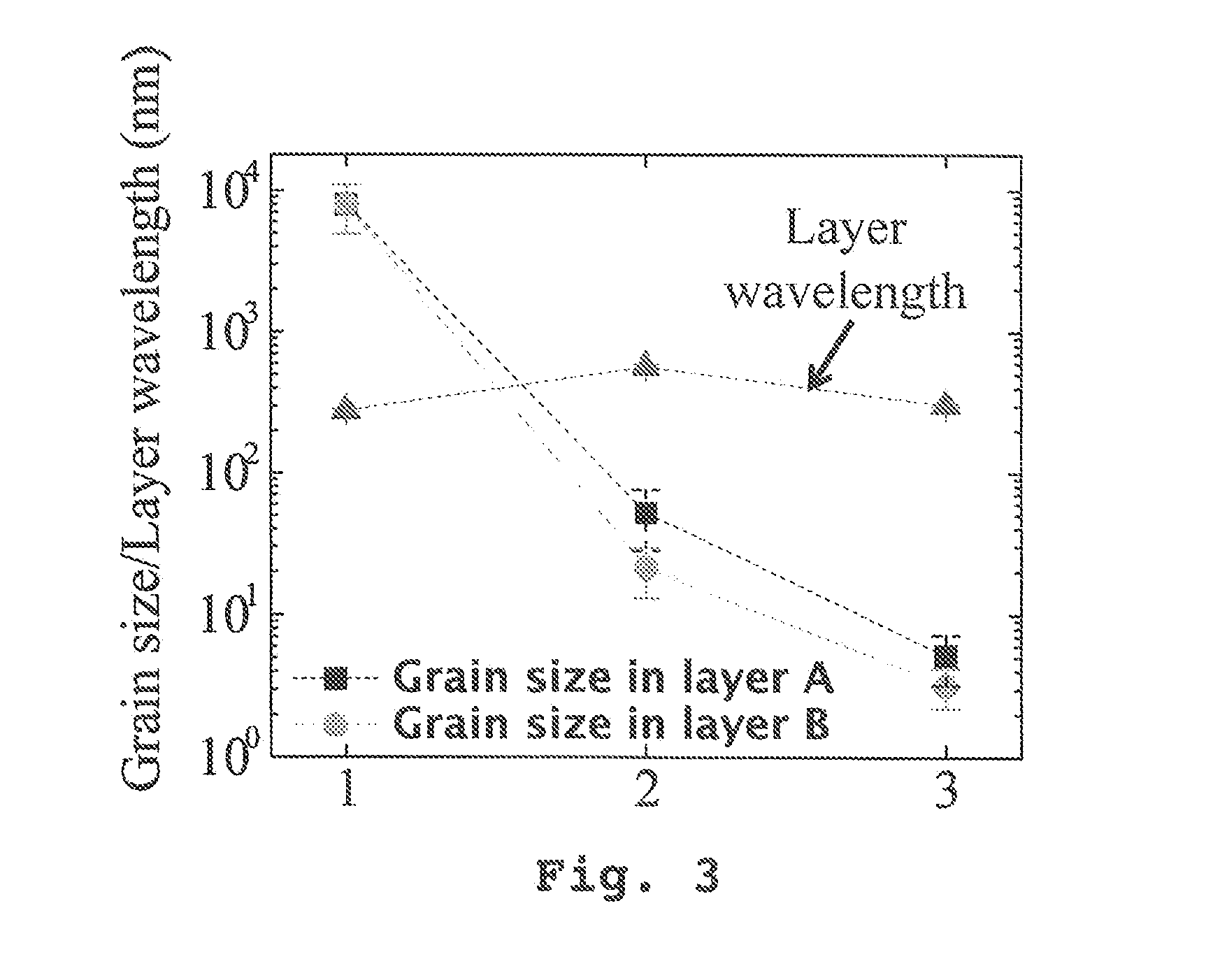TUNING NANO-SCALE GRAIN SIZE DISTRIBUTION IN MULTILAYERED ALLOYS ELECTRODEPOSITED USING IONIC SOLUTIONS, INCLUDING Al-Mn AND SIMILAR ALLOYS
a multi-layered alloy and nano-scale technology, applied in cell components, electrolysis components, printing, etc., can solve the problems of not necessarily optimizing strain hardening capacity or toughness, and affecting the propagation of fatigue cracks
- Summary
- Abstract
- Description
- Claims
- Application Information
AI Technical Summary
Benefits of technology
Problems solved by technology
Method used
Image
Examples
Embodiment Construction
[0009]Inventions disclosed herein relate generally, but not always to a single-bath electrodeposition process, which is a versatile, economical, and scalable route to produce complex shapes. During electrodeposition in a properly designed system, composition modulation can be obtained using galvanostatic or potentiostatic control, and the layer thickness can be controlled by monitoring the transferred charge. Both galvanostatic (current) and potentiostatic (voltage) control may be used.
[0010]A unifying concept with both of these types of control is that the composition of the deposit is based on varying the electrical power level that is delivered to the electrodes, either by way of varying the current density, or the voltage. Thus, as used herein, electrical power control will be used to mean either galvanostatic control or potentiostatic control, or both. In the following discussion, examples are discussed most often using galvanostatic control. However, it will be understood that...
PUM
| Property | Measurement | Unit |
|---|---|---|
| Grain size | aaaaa | aaaaa |
| Grain size | aaaaa | aaaaa |
| Grain size | aaaaa | aaaaa |
Abstract
Description
Claims
Application Information
 Login to View More
Login to View More - R&D
- Intellectual Property
- Life Sciences
- Materials
- Tech Scout
- Unparalleled Data Quality
- Higher Quality Content
- 60% Fewer Hallucinations
Browse by: Latest US Patents, China's latest patents, Technical Efficacy Thesaurus, Application Domain, Technology Topic, Popular Technical Reports.
© 2025 PatSnap. All rights reserved.Legal|Privacy policy|Modern Slavery Act Transparency Statement|Sitemap|About US| Contact US: help@patsnap.com



